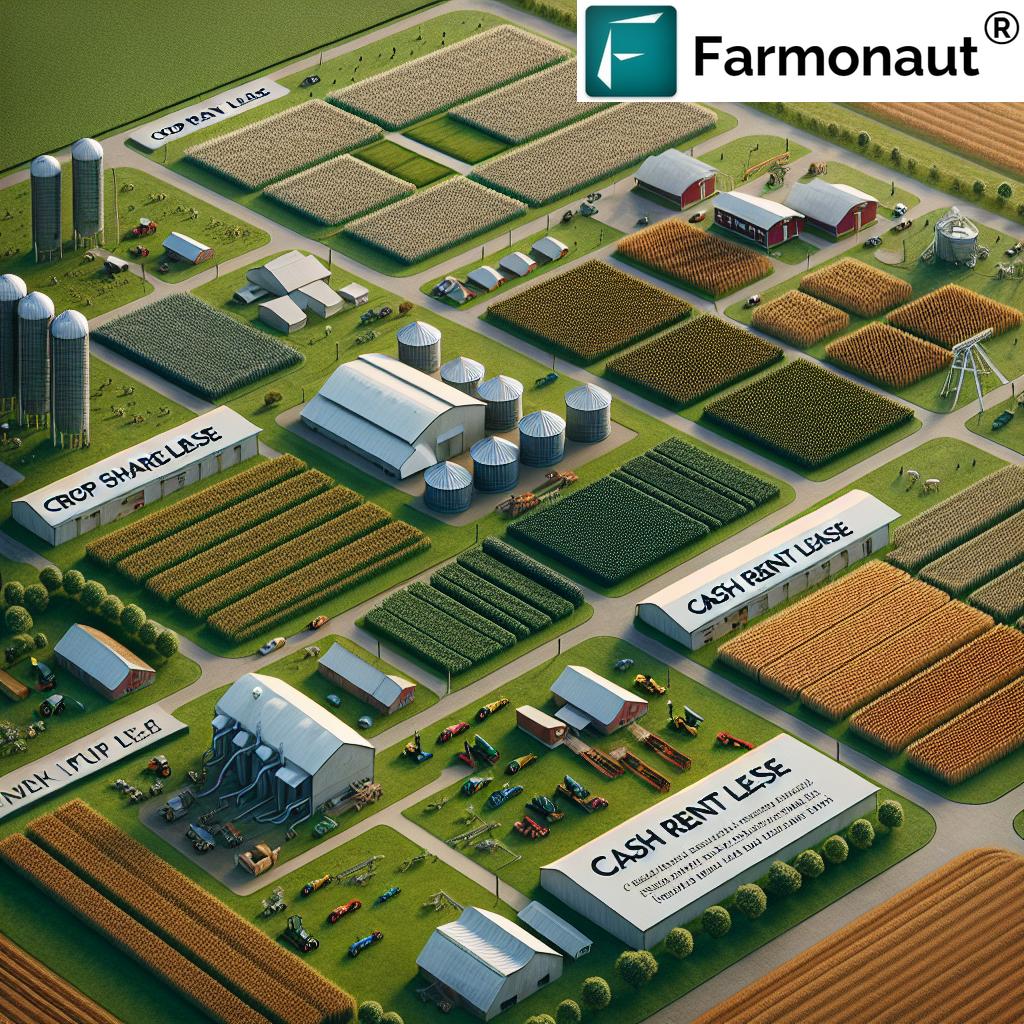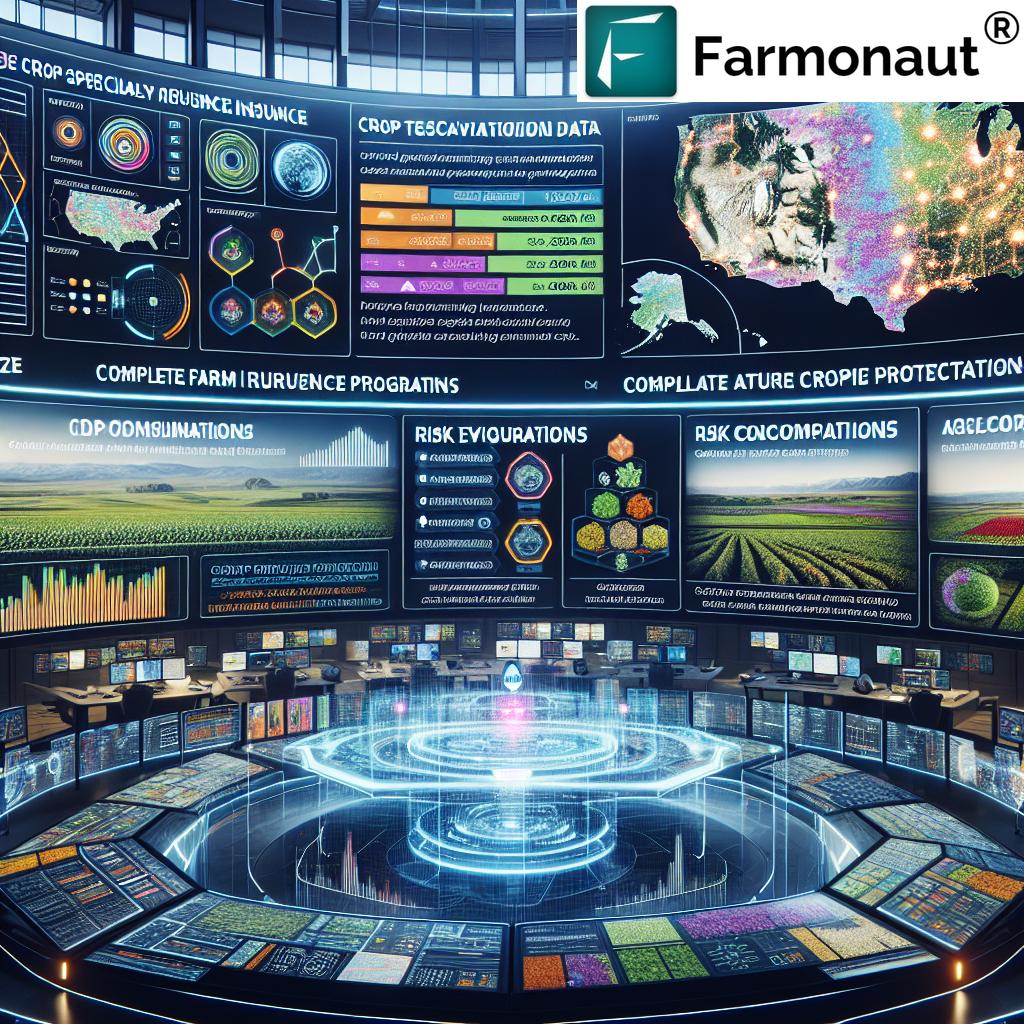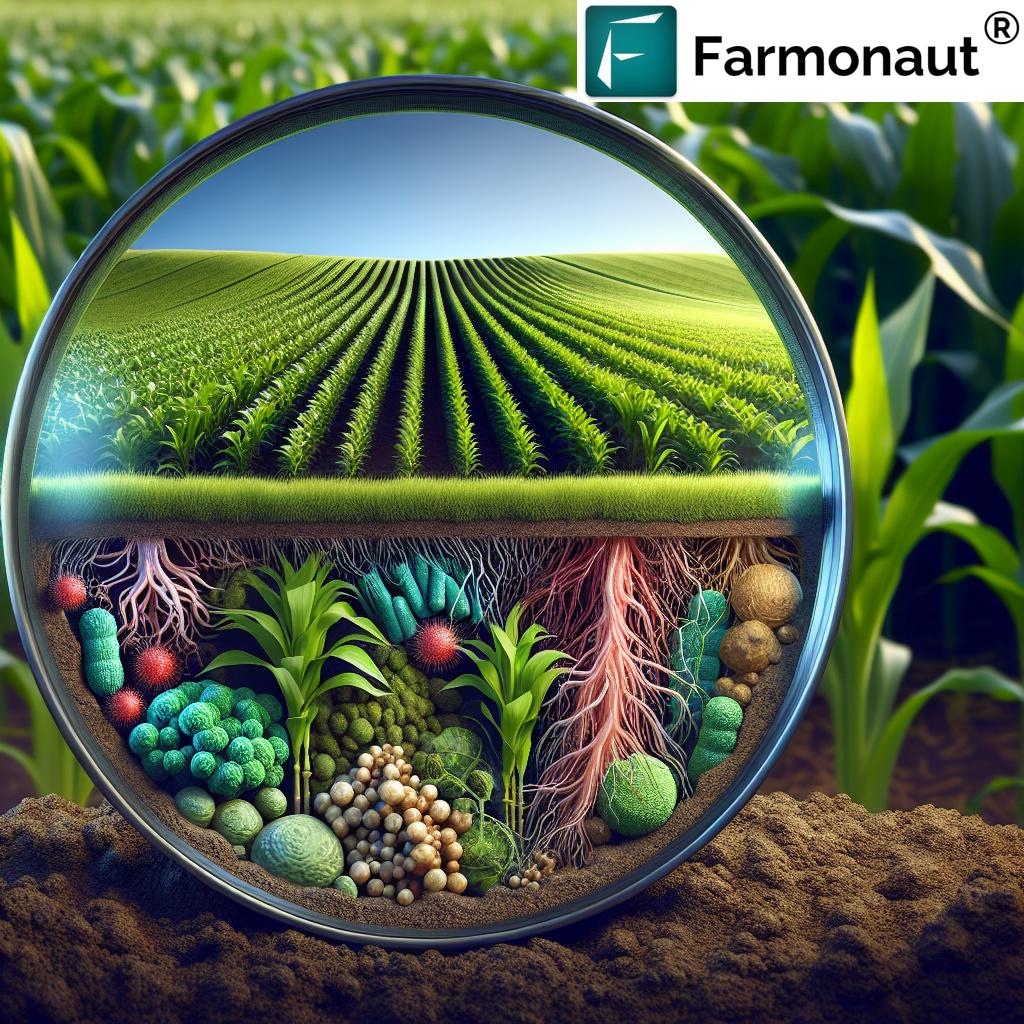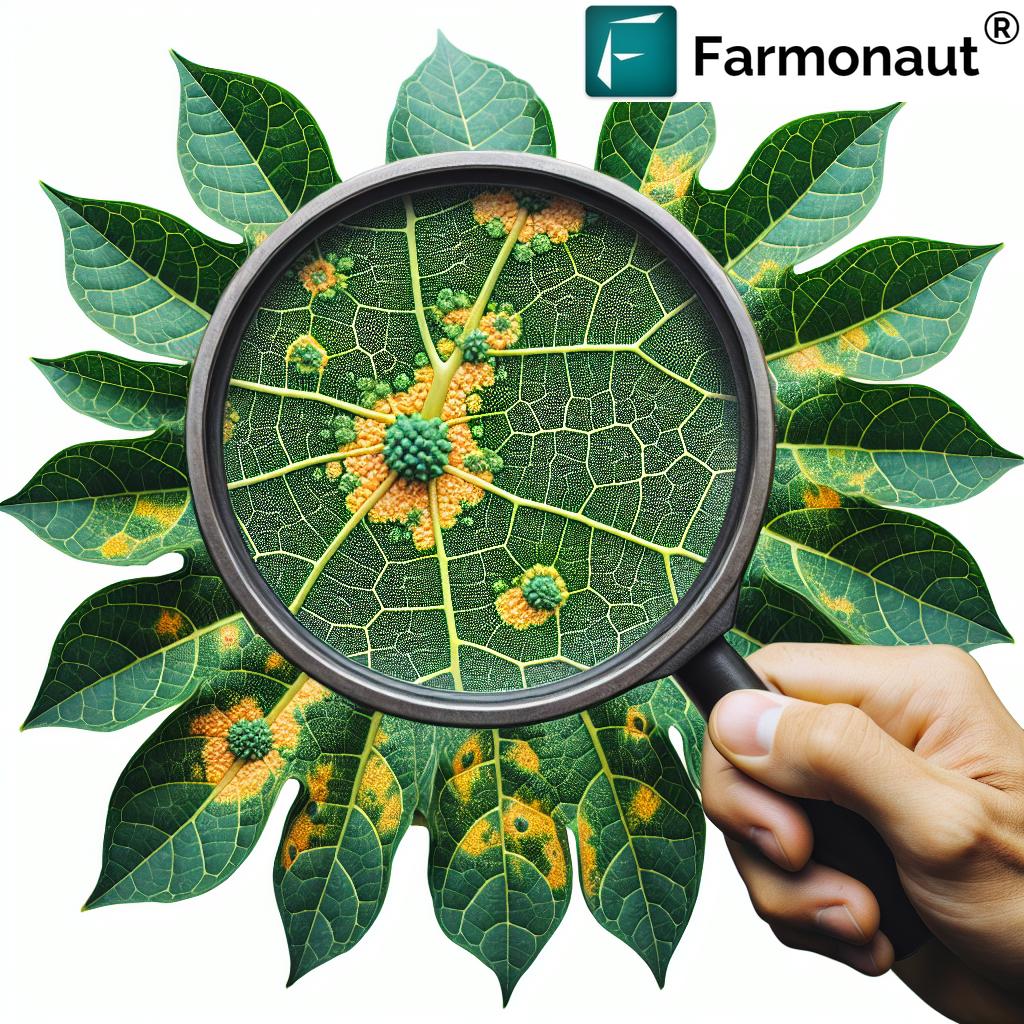Farm Leasing Analysis: 5 Powerful Types for Higher Income
“Over 60% of U.S. farmland is operated under some form of lease agreement, shaping modern agricultural economics.”
In today’s rapidly evolving agricultural landscape, farm leasing stands as a pivotal component, redefining how landowners, tenants, farmers, and foresters collaborate. As we continue to witness significant shifts in agricultural land management, understanding the types of farm leases, their benefits, economic implications, and influencing factors is essential for all stakeholders aiming to optimize farm income and secure long-term profitability.
Whether you are a landowner looking to generate income from farmland without direct involvement, or a tenant seeking access to productive land, navigating the diverse options of farm lease agreements is crucial. With the integration of technology, precision agriculture, and innovative management solutions from companies like Farmonaut, the process of leasing agricultural land has never been more transparent, profitable, and sustainable.
In this comprehensive blog, we will explore the five most powerful types of farm leases for higher income—each with distinct characteristics, economic implications, and practical benefits for both landowners and tenants. Read on to equip yourself with industry insights, real-world examples, and actionable strategies for maximizing your land’s potential in 2024 and beyond.
Industry Trivia
“Cash rent leases account for nearly 40% of all farm leasing arrangements, influencing landowner and tenant income trends.”
Farm Leasing Analysis: Overview and Significance
Farm leasing serves as an essential bridge for aligning the interests of landowners and tenants in the agricultural and forestry sectors. This arrangement enables:
- Landowners to generate income from farmland without direct operational involvement
- Tenants (farmers and foresters) to gain access to productive land and advanced management solutions
- Reduced entry barriers and capital requirements for aspiring farm operators and young farmers
- Flexibility in land use to adapt to changing market conditions, technologies, and environmental needs
- Risk management—with certain lease types allowing for shared risks and rewards between both parties
The rise of precision agriculture and data-driven management—powered by solutions such as Farmonaut’s real-time crop health monitoring and advisory tools—is revolutionizing the way farm leasing agreements are structured, tracked, and managed. This not only promotes transparency but also ensures all stakeholders benefit from the best farm leasing practices and financial outcomes.
5 Powerful Types of Farm Lease Agreements
The diversity in farm lease agreements empowers both landowners and tenants to tailor arrangements to their specific needs and strategies. Let’s analyze each type of farm lease for higher income and smarter agricultural lease management:
-
Cash Rent Lease
The cash rent lease is the most straightforward and widely adopted type among farm lease agreements. In this arrangement, the tenant pays the landowner a fixed amount of money—typically on an annual or bi-annual basis—for the exclusive right to use the farm property.
Key characteristics:
- Predictable income stream for the landowner, irrespective of farm performance or market prices
- The tenant retains all profits from farming activities after covering operational costs
- The tenant assumes all risks related to crop yields, commodity price fluctuations, weather, and other factors
- Simplifies lease management with clear terms and responsibilities
Best for: Landowners seeking steady income without direct management. Tenants who prefer freedom in agricultural practices and are confident in managing risks.
-
Crop Share Lease
A crop share lease (sometimes called sharecropping) is a collaborative farm lease agreement where the landowner and tenant share both the costs and returns of agricultural production.
- The landowner provides the land and may contribute resources such as seed, fertilizer, or irrigation
- The tenant supplies labor, expertise, equipment, and management
- The harvest is divided between both parties as per a predetermined percentage (e.g., 60/40 or 50/50)
- Both risks and profits are shared; if yields are poor, both suffer reduced income
Best for: Partnerships where both parties wish to be involved and share agricultural risks and wins. It aligns interests and encourages collaborative investment in land improvements and sustainable practices.
-
Flexible Cash Lease
The flexible cash lease (or “adjustable rent”) fuses the benefits of cash rent and crop share agreements. It introduces flexible payments based on actual yields or market prices.
- Includes a guaranteed base rent, with additional payments or bonuses tied to yield outcomes or market performance
- Allows landowner some exposure to upside profit potential in good seasons while maintaining a stable base income
- Offers tenants some risk-sharing with the landowner, which can encourage investment in higher productivity
Best for: Scenarios with highly variable market or weather patterns, or where both parties want a balance of stability and shared rewards.
-
Custom Farming Lease
In a custom farming lease, the landowner hires a tenant (or farming contractor) to conduct specific farming operations.
- The landowner keeps ownership and often also covers input costs (seed, fertilizer, equipment)
- The tenant provides labor, management, and technical expertise in exchange for a fixed fee or per-acre payment
- The landowner receives the full crop revenues and all associated risks, while the tenant gets paid irrespective of yields
- Can include enhanced resource management and precision farming through technologies like those offered by Farmonaut
Best for: Landowners desiring to remain involved and to directly benefit from high productivity but without day-to-day labor.
-
Livestock-Share Lease
In livestock-share lease agreements, the focus is on animal husbandry rather than crops.
- Landowner provides the land, facilities, fencing, and sometimes buildings
- The tenant supplies livestock, labor, and managerial expertise
- Profits and risks (e.g., animal health, market prices) are shared as per predetermined split (e.g., 70/30 or 60/40)
- Ideal for landowners with idle livestock infrastructure seeking to generate stable income and preserve their property
Best for: Situations with established buildings and grazing resources where the landowner prefers to avoid direct animal care.
Comparative Analysis Table of Farm Lease Types
To help landowners and tenants compare the core aspects of different farm lease agreements, refer to our detailed table below:
| Lease Type | Description | Typical Duration (Years) | Estimated Landowner Income Increase (%) | Required Tenant Investment Level | Key Economic Benefit |
|---|---|---|---|---|---|
| Cash Rent Lease | Tenant pays fixed cash amount for land use; all crop/livestock profits and risks belong to tenant | 1–5 | +10–15% | High (Operating costs, equipment, labor, inputs) | Stable income for landowner, low admin overhead |
| Crop Share Lease | Landowner and tenant share both inputs and output (harvest), profits, and risks by a predetermined ratio | 1–10 | +15–25% | Medium to High (Shared inputs and responsibilities) | Profit potential in strong years; risk-sharing aligns interests |
| Flexible Cash Lease | Base cash rent plus bonuses tied to market prices or yields; both share upside/downside | 1–7 | +12–22% | High | Income linked to farm success; risk is partially shared |
| Custom Farming Agreement | Landowner hires tenant/operator to perform specific operations in exchange for a service fee | 1–3 | +5–12% | Low to Medium | Landowner profits from yield, maintains control without labor |
| Livestock-Share Lease | Landowner and tenant share facilities, labor, and profits from livestock operations | 3–9 | +12–20% | Medium (Livestock capital, management) | Diversifies landowner income; promotes shared investment |
“Over 60% of U.S. farmland is operated under some form of lease agreement, shaping modern agricultural economics.”
Economic Implications of Leasing Agricultural Land
Our choice among farm lease agreements has direct impact on income, risk, and sustainability for landowners and tenants. Here is how:
- Cash Rent Lease: Provides predictable and stable income. Best for risk-averse landowners. However, landlords miss out on boom years with high yields or prices.
- Crop Share Lease / Livestock-Share Lease: Aligns both parties’ fortunes. Income potential is linked to operation success, but so is exposure to risk from drought, disease, or falling market prices. Promotes shared investment in soil health and resource efficiency.
- Flexible Cash Lease: Blends the security of a fixed stream with shared opportunity (and risk) based on yields or commodity prices. Especially effective in climates with yield uncertainty, or when new technologies (e.g., carbon management and sustainability tracking) are being implemented.
- Custom Farming Lease: Allows landowner to pursue maximized output and income, leveraging kindred expertise, without operational headaches. The landowner keeps all risk and reward.
For tenants, long-term lease agreements can unlock easier access to credit (as banks see such contracts as collateral), enabling substantial investment in equipment, technology (like Farmonaut’s product traceability solutions), or soil improvements—all boosting productivity and profitability.
Importantly, the right lease type can encourage sustainable practices by distributing responsibility for resource management, soil health, and risk mitigation. Agreements that link rewards to ecological performance (such as increased carbon sequestration using analytics from Farmonaut’s Carbon Footprinting) can directly enhance long-term land value and future income.
Key Factors Influencing Farm Lease Agreements
Successful landowner tenant agreements require careful attention to various factors, influencing both lease terms and outcomes:
-
Land Quality and Location:
Productive soils, good topography, access to water/markets, and proximity to infrastructure increase leasing value. -
Market Conditions:
Volatile commodity prices, input costs, and demand for agricultural products affect lease negotiations. In bull markets, cash rents and share ratios trend higher. -
Legal and Regulatory Framework:
Local regulations around land use, environmental standards, and zoning must be respected. Ensure agreements cover compliance responsibilities to avoid disputes. -
Technological Advancements:
The adoption of smart management platforms (for instance, Farmonaut’s Agro Administrator App for large-scale farm management) or precision agriculture tools (crop and plantation advisory services) often influences which party invests in new equipment, and how benefits and costs are distributed. -
Environmental and Sustainability Goals:
Many agreements now include clauses for carbon tracking, conservation tillage, or sustainable resource use. Leveraging real-time data and traceability tools (Farmonaut’s blockchain traceability solutions) ensure regulatory compliance and consumer trust.
Farm Leasing Benefits for Landowners and Tenants
-
Benefits to Landowners:
- Consistent Income: Farm leasing provides a stable income stream without direct management involvement
- Land Preservation: Leasing keeps property under continuous use, which supports ecological health and future succession
- Reduced Risk and Management Burden: Day-to-day operational and financial risks are transferred according to the lease type. Landowners enjoy flexibility in how involved they want to be.
- Property Control: Lease agreements enable owners to maintain ownership and long-term legal control over the family estate
-
Benefits to Tenants:
- Access to Land: Lease agreements allow tenants to farm acres that would otherwise be unaffordable to purchase, helping new and young farmers enter the market
- Operational Flexibility: Customizable lease terms allow implementation of modern technology and innovative farming practices (from AI-based advisory to precision irrigation)
- Profit Potential: Effective management lets tenants reap returns above their lease payments—with share-based models offering upside during strong market conditions
- Access to Financing: Secure leases can be used as collateral for crop loan and insurance products, enhancing capital access and mitigating risk
Challenges and Special Considerations in Farm Leasing
- Negotiation Complexity: Clear communication and an understanding of both parties’ expectations are crucial. Disputes often arise if roles and responsibilities are poorly defined in the agreement.
- Maintenance and Improvements: It’s vital to clarify—preferably in writing—which party will invest in ongoing maintenance and capital improvements (eg., soil health, fencing upgrades, irrigation) to avoid future disputes. Technology-enabled resource tracking makes this transparent.
- Market Volatility: Sudden drops or rises in crop or livestock prices impact tenant profitability and may require flexible lease arrangements or adjustment clauses.
- Succession Planning: Landowners facing retirement or inheritance transitions should plan for long-term tenancy or consider trusted management or third-party advisory services (Farmonaut’s Jeevn AI and resource management).
- Technology Adoption Barriers: Integrating new tools (such as satellite-based monitoring or blockchain traceability) may require both capital and skills—agreement terms should clearly designate financial and operational responsibility.
- Legal Issues: Changing local or national regulations around water, soil, or carbon management can override private lease agreements. Stay updated, and use digital recordkeeping for proof of compliance.
Thorough planning and digital tracking of all responsibilities, inputs, and yield results are crucial to building sustainable, profitable lease agreements for both parties.
How Farmonaut Supports Successful Farm Lease Agreements
As precision agriculture becomes mainstream, robust digital management platforms—like Farmonaut—have transformed how we handle farm leasing agreements and resource management. Here’s how Farmonaut enhances the leasing experience for both landowners and tenants:
- Real-time Satellite Crop Monitoring: Access multispectral imagery for NDVI, soil moisture, pest alerts, and more—helping tenants and owners track productivity, detect issues, and optimize land use.
- AI-Powered Advisory: Jeevn AI delivers personalized crop health tips, weather forecasts, and input recommendations, supporting yield maximization for tenants across all lease types.
- Blockchain-based Product Traceability: Farmonaut’s traceability solutions allow both parties to securely record harvests, livestock sales, and input usage for lease agreement compliance and regulatory needs.
- Fleet and Resource Management: Farmonaut’s fleet tracking tools give tenants or custom operators better control over equipment and machinery, reducing inefficiencies and operational costs.
- Carbon Footprinting: Monitor environmental impact and create lease clauses or incentives around carbon sequestration using Farmonaut.
- API Integrations: Use Farmonaut’s Satellite & Weather API and developer documentation to automate lease compliance, improve reporting, or analyze field-level data.
With these technologies, both sides in a lease agreement are better equipped to track success, resolve disputes, and maximize financial outcomes. Farmonaut’s subscription-based model means affordable access for both individual farmers and larger agribusinesses, with flexible packages available for any scale of operation.
Frequently Asked Questions (FAQ)
-
What is the most popular type of farm lease agreement?
The cash rent lease is the most widely used in the U.S. and many global markets, providing predictable income for landlords and operational independence for tenants. -
What are the main financial risks in farm leasing?
Tenants face risks related to crop failure, livestock disease, and market price declines. Landowners face risk primarily in share-based or custom arrangements, but cash rent minimizes their exposure. -
What legal issues should be addressed in a farm lease agreement?
Clearly define responsibilities for maintenance, improvements, regulatory compliance, payment terms, and dispute resolution. Include terms for early termination and succession planning. -
How can technology support successful agricultural lease management?
Platforms like Farmonaut provide actionable insights for crop monitoring, fleet management, and traceability, making farm leases more transparent, compliant, and profitable for both sides. -
Can tenants use long-term leases as collateral for farm loans?
Yes, lenders often view secure, long-term lease agreements as loan collateral, helping tenants invest in equipment and inputs. -
Are lease terms negotiable each year?
Most lease terms are renegotiated at the end of the contract period. Some leases include automatic adjustment clauses (e.g., for inflation or market conditions).
Conclusion: Optimizing Farm Leasing for Higher Income
Farm leasing is a dynamic and indispensable component of successful agricultural land management in the 21st century. As land values and input costs rise, choosing the right mix of farm lease types becomes vital for landowners and tenants looking to boost income, optimize operations, and enhance sustainability.
Smart use of technology—from Farmonaut’s satellite monitoring and AI-based advisory to blockchain-based transparency and resource optimization—makes today’s leasing more informed, collaborative, and profitable for all parties. Whether opting for cash rents, share agreements, or flexible custom solutions, we encourage all stakeholders to:
- Consider the full spectrum of economic implications and risk-sharing opportunities
- Align lease terms with sustainability and operational goals
- Leverage digital tools to ensure compliance, transparency, and long-term land value growth
Now is the time to unlock new profitability and sustainability by modernizing your approach to farm leasing—with expert insights, clear agreements, and technology-led management.
Explore Farmonaut Subscription Plans
Farmonaut provides affordable, scalable satellite-based and AI-driven subscription services for crop monitoring, advisory, traceability, and fleet/resource management.
Select the best plan for your farm size and business model below:

















